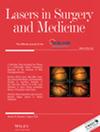Timing of Laser Intervention on Facial Scars: A 3D Imaging and Scar Scale Analysis in a Retrospective Study
Abstract
Objectives
Scars resulting from injuries or surgical procedures often present both physical and aesthetic challenges. Recent studies have indicated promising results in improving postoperative scar outcomes through the combined use of specific laser technologies. Nevertheless, there remains a crucial need for further exploration to ascertain the optimal timing for initiating such treatments.
Methods
In this retrospective investigation, a cohort of 47 adult patients who did not require hospitalization was analyzed. These patients were divided into two distinct groups: Group A, which received intervention beginning 2 weeks after their respective operations, and Group B, which commenced intervention 4 weeks postoperation. Each group underwent a comprehensive treatment protocol consisting of five laser sessions. Initially, patients underwent three sessions of V-beam pulsed-dye laser (PDL) therapy followed by two sessions of ablative fractional CO2 laser (AFL) therapy. Evaluation of outcomes was conducted using advanced imaging techniques such as Antera 3D imaging, in conjunction with established scar assessment tools including the Vancouver Scar Scale (VSS) and the University of North Carolina “4P” Scar Scale (UNC4P).
Results
All patients successfully completed the full course of five treatment sessions, with no dropouts and no reported adverse events. Baseline cosmetic assessments of scars were equivalent across both groups. In Group A, the mean VSS scores decreased from 7.04 before treatment to 5.29 at 3 months posttreatment and further to 4.33 at 6 months posttreatment. Meanwhile, in Group B, scores decreased from 7.52 to 6.83 at 3 months and 6.17 at 6 months. There were no statistically significant differences in baseline VSS scores between the two groups (p = 0.34). At both the 3- and 6-month follow-up points, mean VSS scores were significantly lower in Group A compared to Group B (p < 0.05). Similar trends were observed in UNC4P scores. Statistically significant differences were noted across all time points (baseline, 3 months, and 6 months posttreatment) for both VSS and UNC4P scores (p < 0.05). Subset analysis revealed greater improvements in texture and depression volume at 3 months posttreatment, while improvements in depression area, depth, elevation variation, and area were more pronounced at the 6-month mark.
Conclusions
Early intervention using the combined 595-nm pulse dye laser and CO2 ablative fractional laser (AFL) 2- and 4-weeks post-surgery proves to be an effective and safe method for improving scar outcomes, particularly for facial surgical scars when treatment starts 2 weeks after surgery. However, further research is needed to refine our understanding and address potential study limitations.

 求助内容:
求助内容: 应助结果提醒方式:
应助结果提醒方式:


